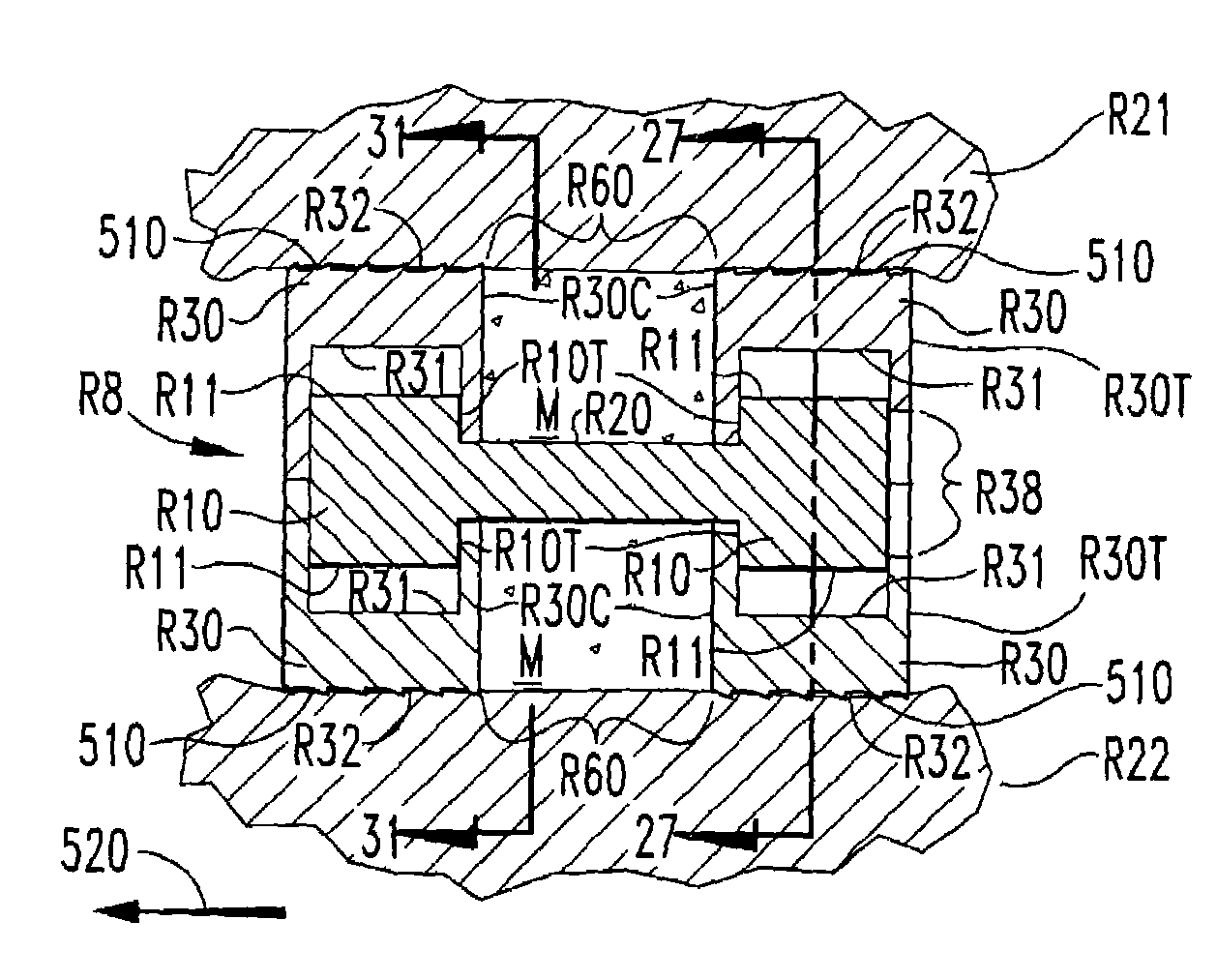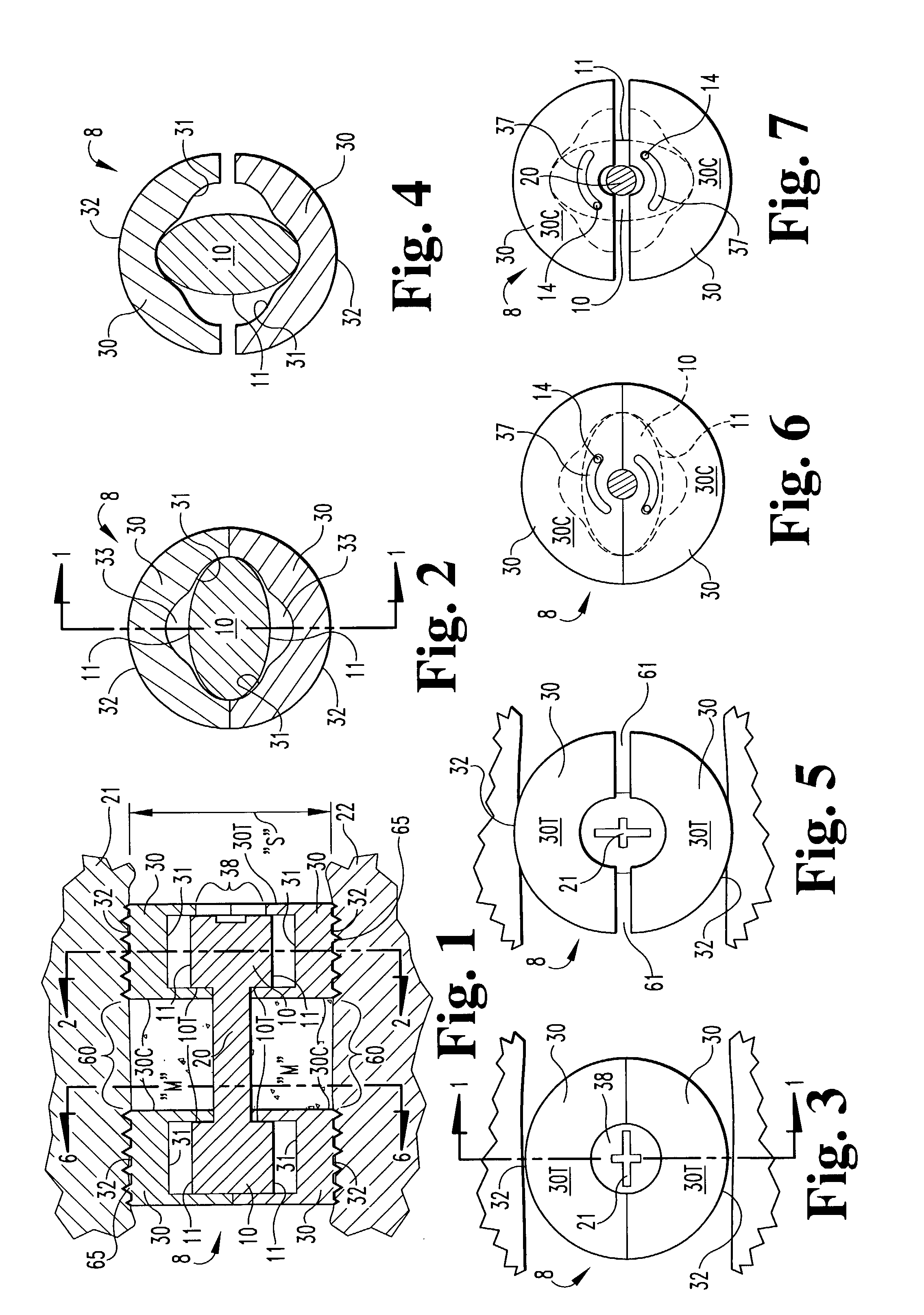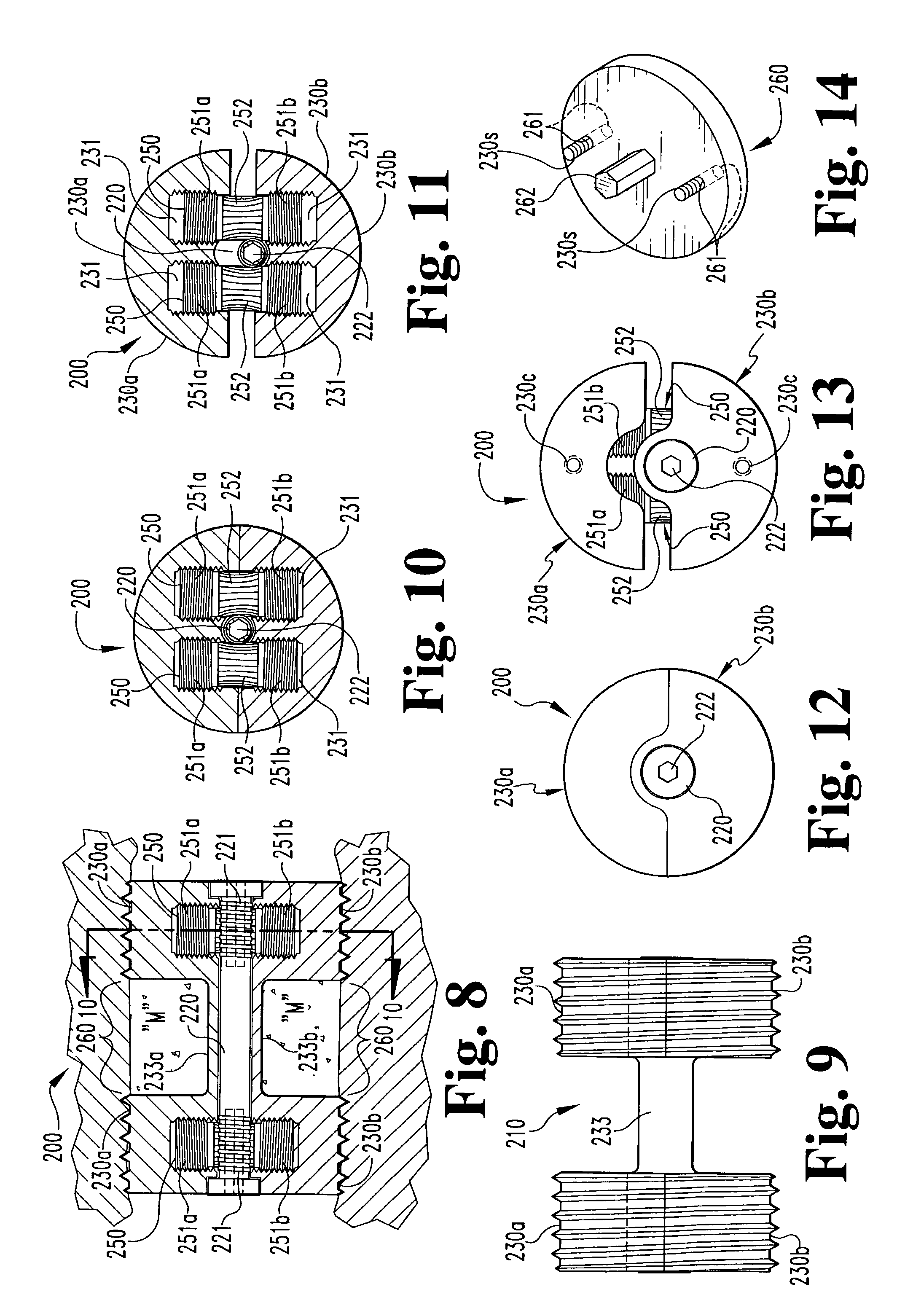Expandable spinal fusion device and methods of promoting spinal fusion
a fusion device and expandable technology, applied in the field of expandable osteogenic fusion devices, can solve the problems of affecting the normal anatomical function of the disc, affecting the complete fusion of the disc, and superfluous hardware used to maintain the stability of the spine,
- Summary
- Abstract
- Description
- Claims
- Application Information
AI Technical Summary
Benefits of technology
Problems solved by technology
Method used
Image
Examples
first embodiment
[0048]In accordance with the present invention, an expandable osteogenic fusion implant 8, depicted in FIGS. 1–7, has a cam-action expansion member. Implant 8 includes cams 10 connected at opposite ends of a connecting member 20, and two end members 30, respectively, enclosing each cam. Cams 10 have an outer surface that contacts a first portion of the inner surface of each of the ends 10 when the implant is not expanded, but when rotated as in FIG. 4, the cams 10 contact a second portion of each of the end members 30. The end members 30 further include exterior surfaces 32 that contact the endplates of the vertebral bodies 21 and 22, respectively, above and below the disc space “S” of FIG. 1 when the implant is in an expanded configuration. Exterior surfaces 32 may include a bone engaging configuration 65, such as threads or ridges to promote a secure positioning of the implant or to enable insertion of the implant. The implant transforms from the non-expanded configuration to the ...
third embodiment
[0061]In accordance with a third embodiment, referring to FIGS. 15–18, an expandable osteogenic fusion implant 300 includes a rack-and-pinion type expansion member. implant 300 includes upper end 330a and lower end 330b, having corresponding bores 331. Elongate central portions 333a and 333b extend between and connect the respective upper end portions 330a and the lower end portions 330b. Alternatively, only one elongate central member 333 may be included extending between either the upper end portions 330a or the lower end portions 330b. In either case, the elongate central member may be permanently or removably attached to the end portions 330a and / or 330b, such as by welding, screwing or bolting. Alternatively, the end portions 330a and 330b and the elongate member 333 may be formed as one piece. The implant 300 further includes gear racks 350, having rack teeth 351, disposed within each bore 331. The implant 300 also includes central axle 320 having central axle gear teeth 321 c...
PUM
 Login to View More
Login to View More Abstract
Description
Claims
Application Information
 Login to View More
Login to View More - R&D
- Intellectual Property
- Life Sciences
- Materials
- Tech Scout
- Unparalleled Data Quality
- Higher Quality Content
- 60% Fewer Hallucinations
Browse by: Latest US Patents, China's latest patents, Technical Efficacy Thesaurus, Application Domain, Technology Topic, Popular Technical Reports.
© 2025 PatSnap. All rights reserved.Legal|Privacy policy|Modern Slavery Act Transparency Statement|Sitemap|About US| Contact US: help@patsnap.com



